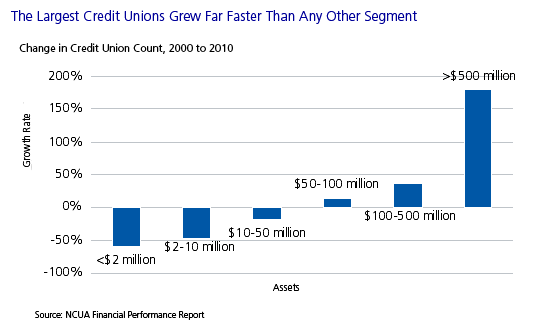Tipping Scale: Credit Union Consolidation
Abstract
The past 10 years have seen significant concentration in the credit union landscape, with credit unions of more than $500 million in assets rapidly gaining deposit share and growing in number, while smaller players are being forced out of the competition. Is this trend healthy for the credit union market? Can credit unions between $10 million and $50 million in assets survive, and what will their role be?
In a new report, Tipping Scale: Credit Union Consolidation, Celent looks at trends in credit unions by asset category and explores the underlying issues causing the decline of credit unions. The report specifically takes into account efficiency ratios, deposits, and total count.
Credit unions with less than US$2 million in assets are quickly disappearing, while those with $2 million to $10 million are not far behind. Looking at the entire credit union spectrum, the number of credit unions in the US is declining rapidly, from 10,316 at the end of 2000 to 7,339 at the end of 2010.

“In the past, credit unions simply required a branch or two, a core banking system, and an ATM,” says Bart Narter, Senior Vice President of Celent’s Banking Group and author of the report. “In the past 10 years, Internet banking, bill pay, know your customer, and Office of Foreign Assets Control (OFAC) compliance are table stakes. Going forward, competition will be driven by demand for mobile banking, consumer and business remote deposit capture, and branch capture.”
This report first examines overall credit union count within each tier, then looks at the efficiency ratios, and finally examines the trajectory of shares and deposits for each category over the last 10 years.

